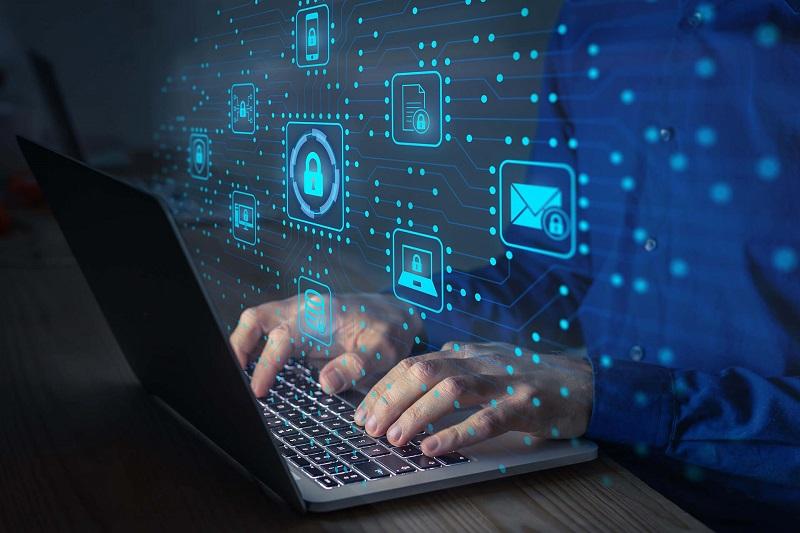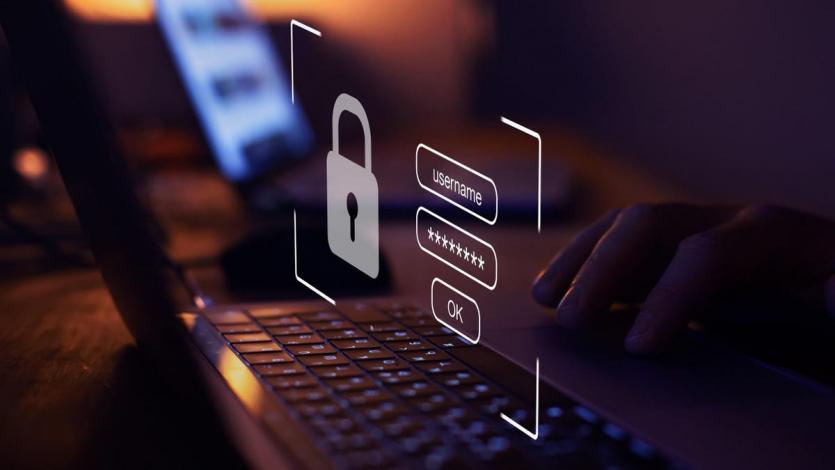What Is “Cyber Security Tour” And What Does It Mean?
The Perspective Of The Information Technology World Shows That The Era Of Centralized Networks Is Over.
However, many companies are unwilling to abandon the traditional model and keep pace with the developments in the information technology world.
Aligning with the new trends governing the information technology and security industry is not an easy task for companies with a complex information technology structure.
For example, banks and government agencies can hardly break out of traditional secure walls and enter today’s decentralized world.
Asr Novin emphasizes that organizations should use the maximum power of equipment in the best way and, in addition, use cloud space and data centers to achieve more efficient capabilities.
More precisely, information sources and data are not limited to the organization’s internal environment in the new era. The exciting thing is that telecommuting has caused many employees to access organizational data and information outside the company’s leading network.
The increasing dependence on external resources in interaction with the optimal use of internal resources has caused the requirements of the security world to change. Changes have led to the formation of a concept called ” Cybersecurity Mesh.”
Cyber security tour is one of the less heard concepts of the security world. Still, it is discussed in detail in analyst meetings and international gatherings. In this article, we will analyze this concept of the world of security.
What is a cyber security tour?
CSMA Cybersecurity Mesh Architecture is a security strategy. Regarding the explanation of this technology, Gartner says: ” Cybersecurity architecture is the design and implementation of an IT security infrastructure, and its goal is not only to create a single environment around all the nodes or devices of the IT network but also for each access point a Create a smaller, unique environment so that it can be monitored more precisely.”
In general, the cyber security tower architecture abandons the traditional methods of implementing different layers of security. It focuses on access points and critical assets to ensure that the security architecture protects all topics from potential breaches.
Is the cyber security tour strategy effective?
Statistics show that the above strategy is significantly able to repel cyber-attacks. The evaluation of recent cyber attacks shows that hackers no longer desire to penetrate points outside the organization’s communication network and are looking for ways to penetrate access points and move across the organization’s infrastructure to penetrate the most valuable data, assets, or organization systems.
Currently, accessing each endpoint is attractive to hackers, and third-party access points are among the most vulnerable issues in the company.
It makes it more valuable for hackers to target third parties, especially in critical infrastructure industries such as healthcare and manufacturing. Based on this definition, we should say a cyber security tour is a distributed approach to control and maintain the security of cyberspace in a scalable and flexible way that specializes in accessibility to organizational assets.
As the name suggests, the mesh pattern acts like a spider’s web of intertwining webs, focusing on a broader environment rather than focusing on protecting a traditional narrow-scale IT environment.
There is a subtle point here; This architecture emphasizes maintaining and coordinating organizational policies in a centralized way but tries to implement these policies in a distributed and scattered manner.
IT units can implement small and isolated environments to protect scattered access points in such a situation. More precisely, people outside the company who intend to communicate with the organization’s infrastructure each have a protected environment to access the network. IT managers define specific access levels for each.
Gartner predicts that by 2023, organizations implementing a secure network architecture will experience 90% less economic damage from cyber attacks. Such statistics seem reasonable because if a hacker breaks into a system with all its internal access points protected, he will have no way to penetrate the organization or move to the lower layers of the organization’s network. In this way, the range of the attack level reaches zero.
Based on what model are organizations able to implement cyber security tour architecture?
In the above strategy, “access” is a crucial word. Accordingly, we must understand the steps we need to take to secure endpoints and build a more advanced and connected cybersecurity infrastructure.
- In the first step, you need to identify the organization’s access points and implement an access policy for them. Knowing your organization’s critical assets and vulnerabilities (connecting to a third-party access point) will help you identify the best place to deploy security tools.
- In the second step, you should use access control methods such as multi-factor authentication and a “zero trust” approach to restrict access to resources. Controlling access to valuable assets, data, and systems is the easiest way to prevent hackers from moving across the network if they penetrate a specific point.
- In the third step, all access must be controlled. Using different methods such as real-time recording of active sessions, reactive analysis, and regular reviews, you can get the information you need to prevent intrusion into the network.
Zero Trust Strategy
The cyber security tour is based on implementing a vital principle: the construction of a “Zero Trust Network.” More specifically, a zero-trust network is network management and control security model used by large organizations with sensitive assets, such as financial organizations.
This network does not trust any machine, service, or person in the network and always emphasizes that at all stages and from any point, external and internal users and devices that intend to connect to the network must be authenticated.
Based on this view, no device can access the network by default. Perimeter-based security faces severe problems in most cases, with nearly 34% of data leaks and intrusions occurring in the network.
Using the zero-trust model, Tor Cyber Security tackles new threats and responds to different needs for network access. Based on cyber security, tour architectureThreats can be detected in real-time, and data and other company assets can be better protected than a simple password.
The security tour ensures that all data, systems, and equipment are equally and securely protected. More specifically, it doesn’t matter if the assets are located inside or outside the enterprise network; in either case, the assets are best protected.
In such a situation, any attempt to access the data is considered invalid by default until the security protocol confirms the validity of this access and connection.
What effect does cyber security tour have on the development of information technology?
In traditional cyber security mechanisms and patterns, you will have access to different parts of the environment when permission to access a network is issued. The only factor protecting the web is the password and access levels defined by the network administrator.
The cyber security tour has completely changed the configuration process and offers different solutions to develop and protect the network. To be more precise, information technology security is no longer a step after the construction of the web. At the same time, the design of the network structure is considered.
What are the benefits of using a cyber security tour for companies?
Gartner recommends that companies use identity proofing mechanisms, access management, identity and access management (IAM) professional services, and decentralized identity proofing to better manage the most critical cyber threats and increase information technology security. Cyber Security Tour helps companies in this field in the following ways.
Cyber Security Tour is capable of supporting half of IAM requests
- Most digital assets, identities, and devices reside off-premises, making it difficult to maintain network security based on traditional paradigms. ” Cybersecurity Tor can handle most IAM requests, allowing for easier access management and assigning permissions to remote users, ” says Gartner.
Offering IAM services increases the number of Managed Security Service Providers (MSSPs).
- Managed security services providers (MSSPs) can provide companies with the right resources and skills to plan, develop, and implement comprehensive identity and access management (IAM) solutions. Gartner predicts that by 2023, forty percent of the tasks in this field will be assigned to these companies. The same issue will reduce the number of product vendors that provide individual programs in the area of security and increase the number of security management service providers.
Identity proofing tools are added to the workforce identity verification cycle.
- The dramatic increase in remote collaboration requires more security measures, recovery, and improvement. It is difficult to distinguish an attacker from a real user in a remote work environment. “By 2024, 30 percent of large enterprises will use new authentication tools to address weaknesses in their workforce authentication process,” Gartner says.
Decentralized identity standards will emerge.
- Protecting privacy and security with a centralized approach to identity data management is challenging and complex. It is precisely where blockchain technology comes into play. If you remember, we had an article titled “What does the use of blockchain mean in cyber security ” in the network monthly magazine number 242 of the security chapter, and we pointed out that companies are looking to use blockchain technology in the cyber security industry .are. Do Gartner predicts that a global standard for decentralized identity will be necessary to meet personal and societal needs and enable the best use of organizational resources. By using the decentralized model that cyber security will use based on the mesh pattern, security experts can protect privacy in the best way and confirm the identity and access of the person by requesting minimal information from the person who wants to access the network. D
Further clarification will be provided on security coordination, automation, and response tools.
Security Orchestration, Automation, and Response (SOAR) tools are still under development. As a result, security operations center teams have misconceptions about their scope and effectiveness.
For example, automating all security activities and processes is not currently possible. Some security operations require continuous monitoring and manual approval. Even when it comes to phishing attacks, the organization must strike a balance between machine-driven automation and human decision-making. An expert can only decide whether an email is malicious, but it is possible to automate initial actions and final quarantines.
Based on the proven principle of automation, machines perform better at repetitive tasks. About alerts, false positives, and duplicate detections take up a significant portion of security operations center teams’ time.
Automation can solve the problem of wasted time. Typically, analysts spend most of their time copying and pasting information between different detection tools.
Here, alerts and updates fall into repetitive tasks that don’t require much thought, so automation would be helpful. One thing to note in this section is that security orchestration tools and SIEM tools have a lot in common. SIEM collects machine data and correlates and aggregates data but cannot coordinate response to and enrich alerts.
Therefore, security coordination tools can coordinate and automate the reactions of multiple products to alerts, but they cannot detect signals in the first step. In this case, SIEM collects scattered data and aggregates it in the form of calls, and security orchestration tools receive alerts and line the response.
last word
Third parties and supply chains are weak points of organizations. The cyber security tour points to the critical issue that you must carefully monitor third parties’ relationship with the organization. By following these simple steps, organizations can evaluate and analyze the situation and restore the case to normal in the event of an attack.
According to the research, more than 50% of organizations have experienced at least one security breach due to the weak security of third parties. Hence, organizations must have better control over third parties and users connected to the communication infrastructure.
Since the human resources department cannot monitor these communications, organizations must use software solutions to control the access of third parties to administrative services.














